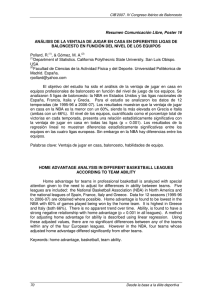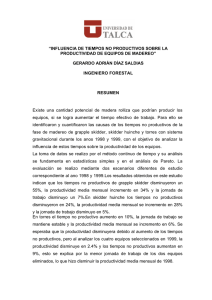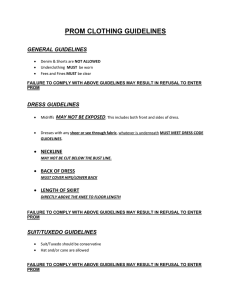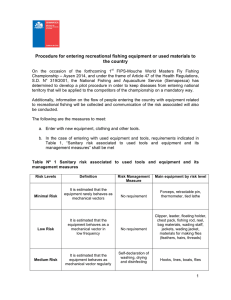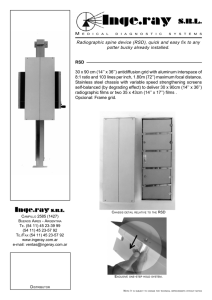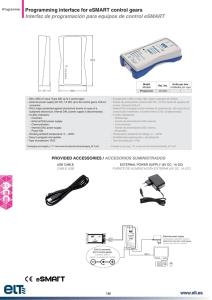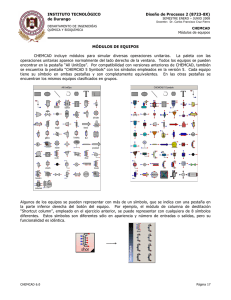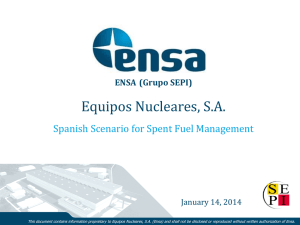1.Ejercicio 2.Exercise - iespicasso-1asir-par
Anuncio
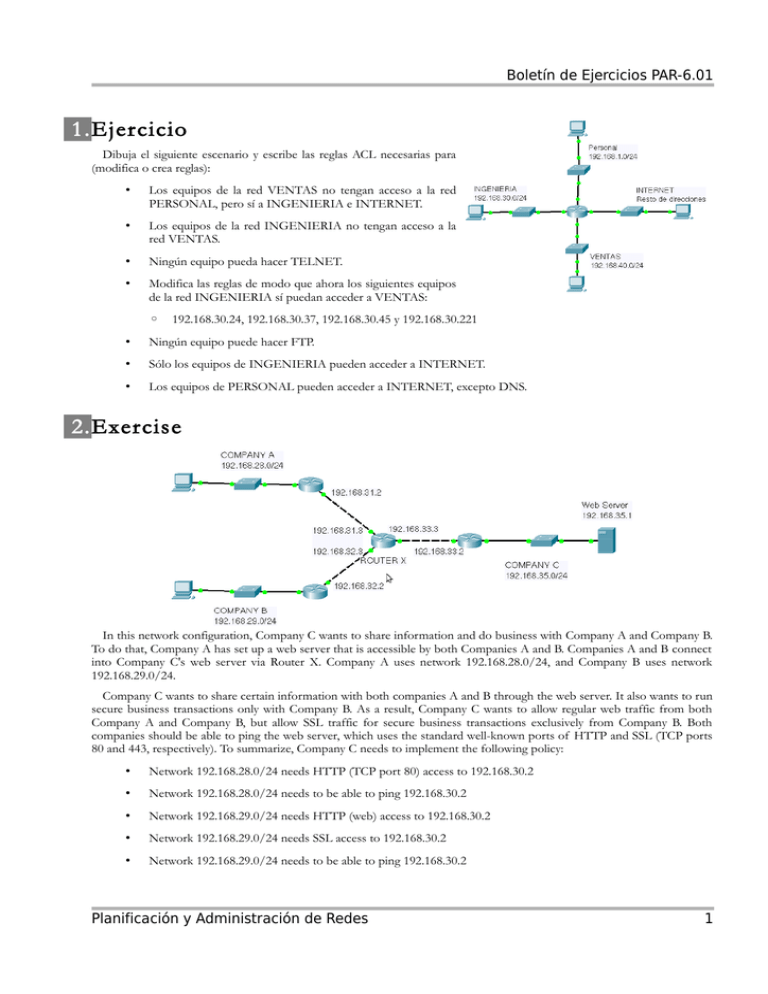
Boletín de Ejercicios PAR-6.01 1.Ejercicio Dibuja el siguiente escenario y escribe las reglas ACL necesarias para (modifica o crea reglas): • Los equipos de la red VENTAS no tengan acceso a la red PERSONAL, pero sí a INGENIERIA e INTERNET. • Los equipos de la red INGENIERIA no tengan acceso a la red VENTAS. • Ningún equipo pueda hacer TELNET. • Modifica las reglas de modo que ahora los siguientes equipos de la red INGENIERIA sí puedan acceder a VENTAS: ◦ 192.168.30.24, 192.168.30.37, 192.168.30.45 y 192.168.30.221 • Ningún equipo puede hacer FTP. • Sólo los equipos de INGENIERIA pueden acceder a INTERNET. • Los equipos de PERSONAL pueden acceder a INTERNET, excepto DNS. 2.Exercise In this network configuration, Company C wants to share information and do business with Company A and Company B. To do that, Company A has set up a web server that is accessible by both Companies A and B. Companies A and B connect into Company C's web server via Router X. Company A uses network 192.168.28.0/24, and Company B uses network 192.168.29.0/24. Company C wants to share certain information with both companies A and B through the web server. It also wants to run secure business transactions only with Company B. As a result, Company C wants to allow regular web traffic from both Company A and Company B, but allow SSL traffic for secure business transactions exclusively from Company B. Both companies should be able to ping the web server, which uses the standard well-known ports of HTTP and SSL (TCP ports 80 and 443, respectively). To summarize, Company C needs to implement the following policy: • Network 192.168.28.0/24 needs HTTP (TCP port 80) access to 192.168.30.2 • Network 192.168.28.0/24 needs to be able to ping 192.168.30.2 • Network 192.168.29.0/24 needs HTTP (web) access to 192.168.30.2 • Network 192.168.29.0/24 needs SSL access to 192.168.30.2 • Network 192.168.29.0/24 needs to be able to ping 192.168.30.2 Planificación y Administración de Redes 1
